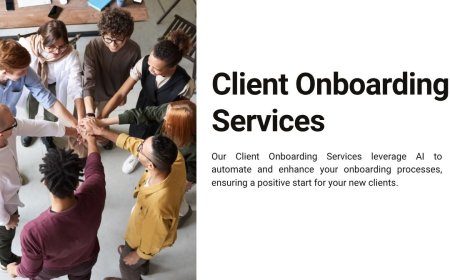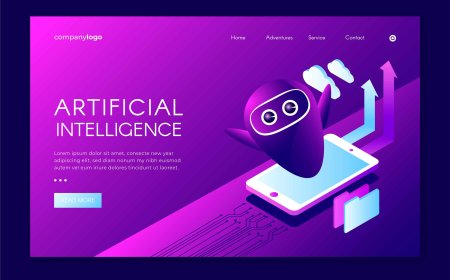Bridging FDA and EU MDR Requirements Using a Unified Compliance Software Platform
Discover how a unified compliance software platform can bridge FDA and EU MDR requirements in the medical device industry. Learn how these digital solutions ensure seamless regulatory alignment, improve documentation management, and simplify compliance across global markets, driving efficiency and reducing risks.

Meeting Global Expectations with Medical Device Compliance Software
In the evolving global landscape of medical device regulation, compliance is more than just an operational requirementit is a strategic imperative. The FDA's 21 CFR Part 820 and the EU MDR (Medical Device Regulation) represent two of the most rigorous frameworks. Achieving and maintaining conformity with both standards simultaneously can be complex without the support of advanced Medical Device Compliance Software. With overlapping yet distinct expectations around product safety, traceability, post-market surveillance, and technical documentation, a unified platform is essential to reduce risk and accelerate global market readiness.
Harmonizing Regulatory Frameworks Through Medical Device Compliance Software
Medical device compliance software creates a digital backbone that aligns processes across jurisdictions. It enables companies to harmonize data capture, risk assessments, and reporting workflows in a format that meets both FDA and EU MDR scrutiny. From design verification to clinical evaluations and vigilance reporting, the platform centralizes compliance evidence and simplifies dual regulatory submissions.
Moreover, this software provides audit-ready documentation in real-time, ensuring manufacturers maintain inspection readiness without last-minute scrambles. These capabilities make regulatory harmonization both scalable and sustainable.
Managing Change Control with Confidence and Precision
Change control is a critical requirement under both FDA and EU MDR regimes. A unified medical device compliance software platform embeds Change Control processes within the product lifecycle. When any product, process, or documentation change is initiated, the platform automatically triggers cross-functional reviews, impact analyses, and approvals.
Instead of relying on decentralized spreadsheets or email trails, all changes are logged in a validated system. This transparency is crucial for ensuring that design changes, manufacturing improvements, or risk mitigations are adequately documented, reviewed, and available for regulatory inspections.
Centralizing Document Control for Dual Jurisdiction Compliance
Document control is the foundation of regulatory success. FDA and EU MDR both demand comprehensive technical documentation, risk management files, and labeling control. Medical device compliance software delivers a robust document control architecture that ensures every file is version-controlled, access-restricted, and audit-ready.
By integrating with global regulatory templates and standards, organizations can efficiently create, review, and approve documents. With multilingual support and secure access control, the platform enables seamless document sharing across global quality and regulatory teams.
Proactive Complaint Handling as a Risk Mitigation Strategy
Regulators on both sides of the Atlantic emphasize proactive complaint management. A delayed or mismanaged complaint can trigger warning letters, recalls, or market access delays. Medical device compliance software enables real-time intake, triage, and escalation of complaints.
The system consolidates complaint data from global sources and aligns it with risk management files, technical documentation, and product history. This enables regulatory teams to analyze complaint trends, identify systemic risks, and respond with evidence-based CAPAs. Whether addressing FDA Form 483 observations or responding to EU market surveillance audits, timely and documented complaint resolution is critical.
Integrating CAPAs to Support FDA and EU MDR Expectations
Corrective and Preventive Actions (CAPAs) are a cornerstone of regulatory compliance and continuous improvement. Medical device compliance software incorporates CAPA workflows that connect nonconformances, audit findings, complaints, and equipment failures into a closed-loop system.
The software ensures that CAPAs are risk-ranked, investigated with root cause methodologies, and validated for effectiveness. Integrated dashboards and audit trails give quality teams real-time insight into CAPA status, overdue actions, and compliance gaps. These capabilities satisfy both FDA Quality System Regulation (QSR) and EU MDR Article 10 obligations.
Guaranteeing Equipment Calibration Compliance Across Facilities
Calibration of inspection, measuring, and test equipment is a shared requirement in global quality regulations. Using manual or siloed calibration tracking can expose organizations to compliance risks. Medical device compliance software automates equipment calibration scheduling, records, and alerts.
This ensures calibration status is always visible, overdue events are flagged, and equipment used in production or testing is verified as compliant. During FDA inspections or EU Notified Body audits, demonstrating up-to-date calibration status is a foundational requirement.
Strengthening Submission Readiness with Unified Data
The preparation of FDA 510(k), PMA, and EU MDR technical documentation can be resource-intensive. When data is fragmented across systems, inconsistencies creep in, delaying approvals or triggering questions from regulators. Medical device compliance software creates a unified data model that connects clinical evidence, Risk Assessments, design files, labeling, and complaints into one cohesive system.
This unified framework simplifies the creation of submission-ready dossiers that are complete, consistent, and aligned with region-specific formats. It also reduces redundancies and errors during file preparation, expediting time-to-approval.
Enhancing Global Collaboration Among Regulatory Teams
Cross-functional collaboration is essential for dual-market compliance. Regulatory, quality, R&D, and post-market surveillance teams must work together across time zones and geographies. Medical device compliance software enables role-based access, real-time updates, and collaborative document reviews that keep teams aligned.
Instead of managing submissions in silos, regulatory teams can jointly prepare, track, and update filings in a single system. This transparency ensures faster responses to regulatory queries, improved audit performance, and streamlined product release cycles.
Leveraging Analytics for Strategic Regulatory Insights
Modern compliance platforms are not just operational toolsthey are strategic enablers. With built-in analytics and dashboards, medical device compliance software gives leadership a clear view of regulatory risk, submission progress, CAPA cycle times, and complaint volumes.
These insights help prioritize actions, allocate resources, and benchmark performance across sites or regions. Whether preparing for an FDA pre-approval inspection or responding to an EU MDR audit, data-driven decision-making supports proactive and confident compliance.
Conclusion: Why ComplianceQuest Is a Strategic Partner for 2025
As regulatory expectations evolve and become more harmonized across the globe, medical device companies need more than just basic toolsthey need intelligent, integrated platforms. ComplianceQuest, built for scalability and compliance excellence, delivers a unified medical device compliance software solution that simplifies the complexity of FDA and EU MDR requirements.
With comprehensive modules for change control, complaints, CAPAs, equipment calibration, and document control, ComplianceQuest aligns quality and regulatory processes into a seamless digital ecosystem. Its cloud-native infrastructure, real-time collaboration tools, and audit-ready capabilities make it a critical enabler for forward-thinking medical device organizations.
By partnering with ComplianceQuest in 2025 and beyond, manufacturers are positioned to meet global compliance expectations, accelerate time to market, and deliver safe, high-quality products to patients worldwide.









































